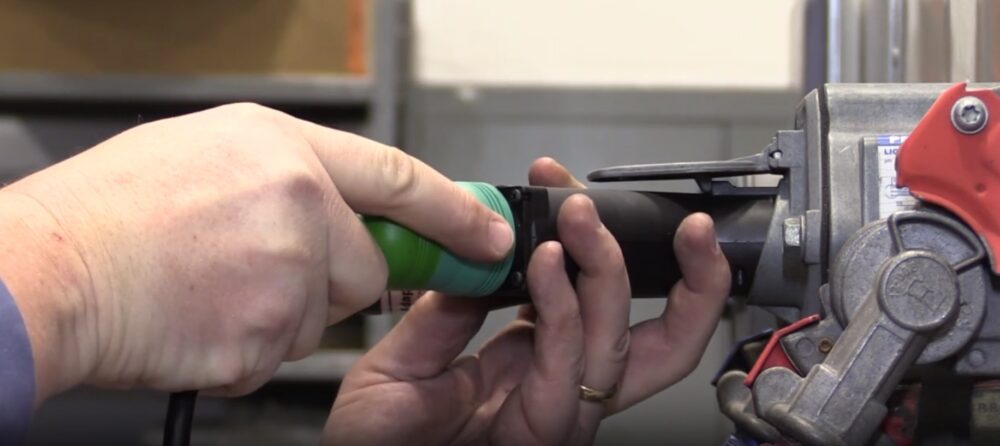Brake parts are often sold on a piecemeal basis because customers only want the minimum number of parts needed to fix their brakes. It might be a set of pads for the front brakes, a single rotor or drum, a caliper or wheel cylinder, a brake hose or a master cylinder. The mentality is to fix what’s broken and nothing more.
This penny-wise, pound-foolish approach to brake repair is common among DIYers, and even some professionals who think they’re saving their customers some money. But each component is part of a total system that only functions as well as the weakest link. The weak link today might be a worn set of pads or a leaky caliper. But what’s going to be the weak link tomorrow or the day after or six months down the road?
When brake repairs are needed, the best approach is to thoroughly inspect the entire brake system and replace any parts that are necessary to restore the brakes to like-new condition. Good brakes are absolutely essential for safe driving. So be sure to remind your customer of the importance of inspecting all the parts in the brake system, not just the part that failed.
Replacement parts, such as brake pads and shoes, should equal or exceed the performance of the OEM parts. Economy pads may be OK for a quick fix, but are no bargain if they can’t deliver the same friction characteristics, stopping power, fade resistance, pedal feel and longevity as the OEM pads. Premium quality brake linings, on the other hand, typically use a greater variety of friction formulas to more closely match the friction requirements of different vehicle applications. This is especially important on late-model vehicles equipped with anti-lock brake systems (ABS) because the ABS system is calibrated to function within certain limits.
The coefficient of friction on the brake linings affects the point at which the wheels start to lock up. That’s why the friction characteristics of the replacement linings should closely match those of the original linings. If they don’t, it can upset the operation of the ABS system and have an adverse effect on braking. Quality aftermarket brake suppliers go to great lengths to make sure their replacement linings meet or exceed the OEM requirements.
On ABS-equipped vehicles, a thorough system inspection should start by turning on the ignition to verify that the ABS warning light circuit works. The ABS light should come on for a few seconds, then go out if everything’s fine.
No ABS warning light? Then either the bulb needs to be replaced or there is a wiring or control module fault. If the ABS light comes on and remains on (does not go out), further diagnosis will be required to determine what’s wrong with the ABS system. On most vehicles, this will require using a scan tool to access the ABS codes and check ABS inputs and outputs.
The next check is the brake fluid inside the master cylinder reservoir. A low level may indicate a leak or worn linings. Discoloration indicates moisture contamination and the need for a fluid change. Chemical test strips are available to test the condition of the fluid. The fluid should also be changed when the brakes are relined to remove moisture and restore corrosion protection.
Next comes the linings. The thickness of the front pads should be measured. If worn down to minimum specifications or if wear indicators are making contact with the rotor, new linings are needed. If the pads are still above the minimum specs, but are worn, replacing them now may save the rotors. Other valid reasons for replacing a set of pads, regardless of their thickness, would be noise, damage or contamination (brake fluid or grease).
Rotors must be relatively smooth and free from cracks, hard spots and excessive runout. Deep scratches or grooves indicate a need for resurfacing. Otherwise, the rotors can be resurfaced unless they are worn too thin (measure the thickness).
Calipers must be leak-free, have dust boots that are free from cracks, and operate normally. Uneven pad wear (inner pad worn more than the outer pad) is a clue that the caliper is sticking. Calipers that are leaking or damaged must be rebuilt or replaced (the same goes for wheel cylinders). Equally important is the disc brake hardware — and lubricating the caliper bushings and slides with a long-lasting, high-temperature brake lubricant.
Drums must be removed to inspect the rear shoes. If the linings are at or below minimum specifications, new shoes are needed. The condition of the brake hardware is also important. Springs that are stretched, broken, badly corroded or badly discolored from heat should be replaced. Self-adjusters should operate correctly and be free from corrosion. Hardware should be replaced when new linings are installed. The inside of the drums must be clean, smooth and flat. Minor wear can be corrected by turning the drums, but if the drums are cracked, out-of-round, bellmouthed or are worn excessively (measure the inside diameter), new drums are needed.
All brake lines and hoses should be inspected for leaks. Any hoses that are cracked, leaking, worn or swell under pressure must be replaced. Finally, check the operation of the parking brake and brake lights.


